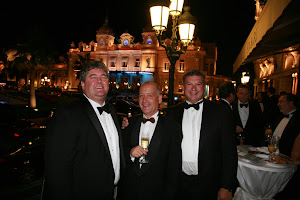
If you are so over the Galapagos; have done Antarctica; go to Sweden for the weekend then, honest to goodness, what have you got left? Go baby go.
The reason Virgin Galactic has become possible is thanks to the vision of one man, Paul G. Allen, who has taken the risk of funding the world's greatest aviation designer of the modern era - Burt Rutan. Rutan's vision for mass space travel was born in the early years of interplanetary transport. The fathers of space exploration never planned sending man into space on what are basically large intercontinental ballistic missiles. They foresaw that people would somehow be taken up to a height and then launched into space. The Cold War forced the hand of space development. All the budget for space technology was usurped for military development, so the space programme became geared to what the superpowers were building - missiles. Burt Rutan has gone back to basics and developed a number of things crucial to making Virgin Galactic and sub-orbital space tourism possible: Firstly, the technology to get people into and back from space cheaply and simply, using an environmentally friendly aircraft that creates virtually no pollution. The key to Rutan's design is a craft, which on its return to earth turns from a beautiful sleek space plane into a 'shuttlecock' - to gently drift back through the atmosphere without overheating. It then metamorphoses once again into a conventional aircraft shape ready for landing. Cost is another factor to make space tourism of the moment not of the future. Burt adopted a much more efficient, and up to date approach to making his space craft, using composite materials as opposed to metals. The most important factor that brings us to the precipice of mass space exploration is safety. Burt has utilised a much safer fuel than ever before - nitrous oxide (laughing gas) and rubber. The two things separately are inert. Only when the nitrous oxide has been forced onto the rubber and then ignited will the motor start, producing its tremendous energy. This is much safer than liquid propulsion systems or solid fuel rockets. All these elements would be useless without the final component to this breakthrough - the ability to carry people into space without first having to train them for half a year at a cost of tens of millions of dollars. A few days of medical assessment and pre-flight familiarisation is all the space tourists of this decade will require prior to their real ET experience.
http://www.virgingalactic.com/





No comments:
Post a Comment